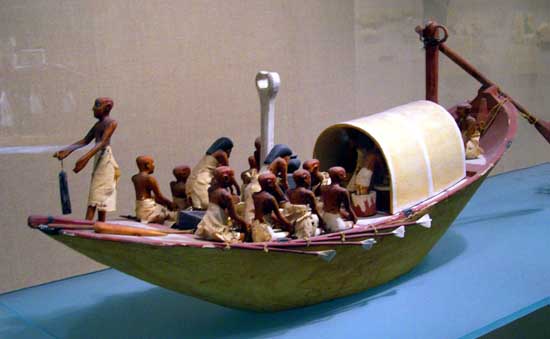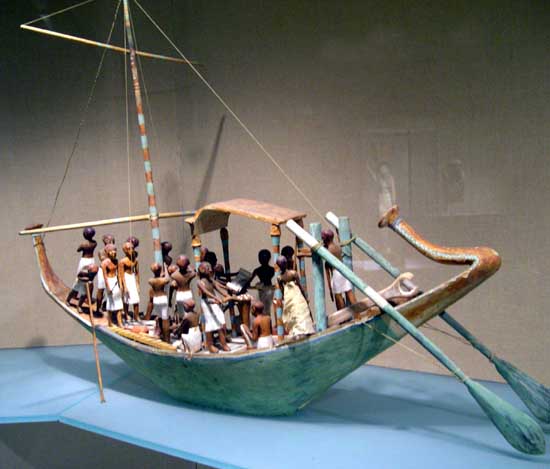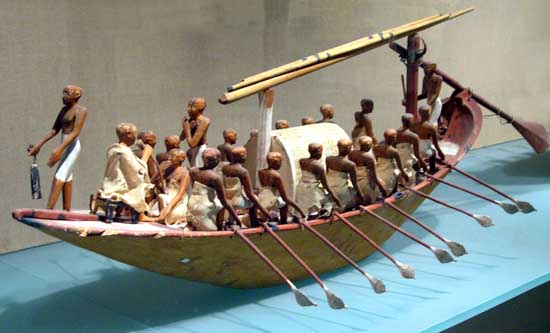 Model
of a Riverboat
Model
of a Riverboat
c.1985 BC; Dynasty 12, early reign of Amenemhat I from Western Thebes
This model of a riverboat is not a modern reproduction, but was made nearly four thousand years ago. The paint, the bits
of linen cloth on some of the figures, and the twine are ancient. The boat and more than twenty other models of boats, gardens,
and workshops were found in a small chamber in the tomb of Meketre, a Theban official who began his career in the civil
service under Nebhepetre Mentuhotep of 11th Dynasty and continued to serve successive kings into the early years of the
12th dynasty.
Meketre is shown smelling a lotus blossom, seated in the shade of a small cabin, which on an actual boat would have been
made of a light wooden framework with linen or leather hangings. Here the hangings are shown partly rolled up to let the
breeze through. Wooden shields covered with bulls' hides are painted on each side of the roof. A singer, with his hand to
his lips, and a blind harper entertain Meketre on his voyage. Standing in front of them is the ship's captain, with his
arms crossed over his chest. He may be depicted awaiting orders, but he may also be paying homage to the deceased Meketre.
As the twelve oarsmen propel the boat, a lookout in the bow holds a weighted line used to determine the depth of the river.
At the stern, the helmsman controls the rudder. A tall white post amidships supported a mast and sail (not found in the
tomb), which would have been taken down when the boat was rowed downstream—as it is here—against the prevailing north wind.
Going south (upstream), with the wind behind it, the boat would have been sailed.
The boat is similar to one Meketre might have used in his lifetime. Certain details, however, suggest that on this voyage
Meketre is travelling toward the afterlife. For instance the blossom he holds is the blue lotus, a flower the Egyptians
associated with rebirth.
Meketre's tomb had been cut into a very poor stratum of stone, and had completely collapsed, leaving a dark, gaping cave
in the cliff. In 1920 the Museum's chief excavator, Herbert Winlock, was having the tomb cleared in order to obtain an accurate
floor plan for his map of Eleventh Dynasty necropolis. The tomb had been robbed in ancient times and the discovery of a
small hidden chamber filled with almost perfectly preserved models that had remained hidden for nearly forty centuries was
one of those fortuitous events that lend such an aura of romance to the often mundane and methodical discipline of archaeology.
At the end of the excavation season, the models were divided. Half of them went to the Egyptian Museum in Cairo, the other
half, including six boats, four models of food production, an enclosed garden, a procession of three offering bearers led
by a priest, and a tall offering figure, came to New York.


